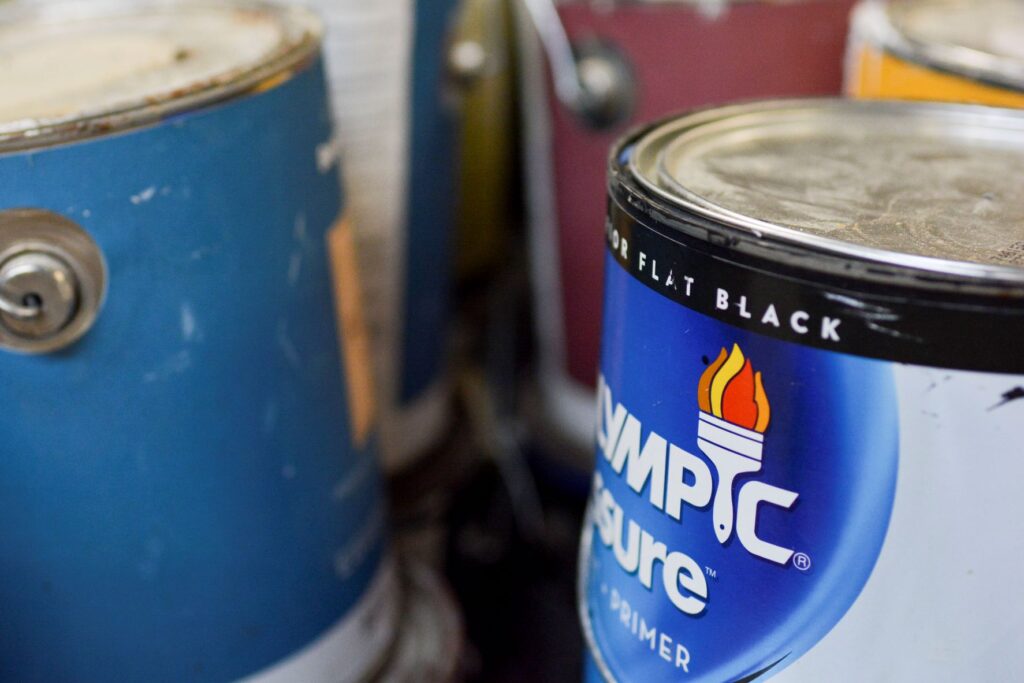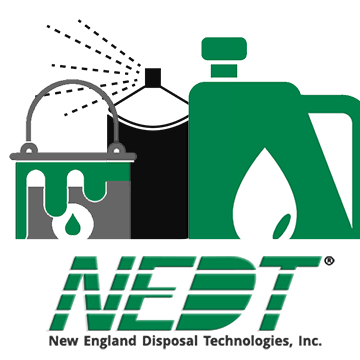Paint is essentially three things: a pigment, which gives the paint color; a liquid base (sometimes called a binder) that holds the paint together, and a solvent that creates the paint’s emulsion. The type of liquid is the biggest difference between types of paint, how they need to be stored, and your paint disposal options when it comes to getting rid of unused or damaged products. Today we’re going to cover the three major types: acrylics, latex, and oil-based paints, their pros and cons, and your paint disposal options when using them.
Acrylic-Based Paints: Chemical Bases
Acrylic paint’s base is chemical, consisting of a solution of liquid plastic acrylic polymer and resins. While these paints have several qualities such as better UV protection and better water resistance, they are also usually more expensive and contain more Volatile Organic Compounds (VOCs).
- Handling: Make sure to follow the manufacturer’s instructions on these products, as the higher amounts of VOCs may require protection and prevention.
- Storage: Due to their higher amounts of VOCs and resins, store them away from heat and sources of fire.
- Disposal: When completely dry, it can be thrown in the trash. For larger amounts, if it cannot be reused, take it to a disposal facility.
Latex-Based Paints: Water Bases
Making up the majority of modern paints, latex paints have their pigments bound by water. They have lower VOCs than other paints, which makes them easier to use and dispose of. They are often the cheapest of the three options since the majority of the solution is water.
- Handling: Due to its low VOC amounts, it can be used with a minimal amount of safety gear. Always make sure to follow the manufacturer’s warnings and instructions.
- Storage: While latex paint stores well, the water in it makes it susceptible to freezing temperatures, which can lead to it becoming unusable.
- Disposal: Since these paints are water-based, they don’t contain toxic chemicals that make them hazardous. Small amounts can be dried out and thrown away in the trash, though larger amounts will still need to be taken to a disposal facility.
Oil-Based Paints: Oil Bases
Oil-based paints use either natural or synthetic oils as their base. Of these three major types of paints, oil-based paints are the most problematic. Not only do they contain large amounts of VOCs—and therefore can be hazardous to use and store—they cannot be disposed of at home.
- Handling: With high amounts of VOCs, care should be taken when using these paints. When opened, make sure to keep away from spark and flame sources.
- Storage: Cans need to be completely sealed—you may want to place plastic wrap between the lid and can before sealing. Keep stored cans away from all heat and spark sources.
- Disposal: Oil-based paints cannot be disposed of at home. They are also the most likely to contain hazardous heavy metals like lead. Take them to a hazardous waste disposal facility.
Regardless of the kind of paint you want to dispose of, you can come to one of NEDT’s Household Hazardous Products Collection Centers! Paints, stains, and other products with high BTU (British thermal units) values are used for electricity and fuel on industrial levels, and other products are disposed of or recycled as available. You can also bring in other household hazardous waste to us. Want to learn more or have an interest in our pick-up service? Contact NEDT today!



Leave a Reply